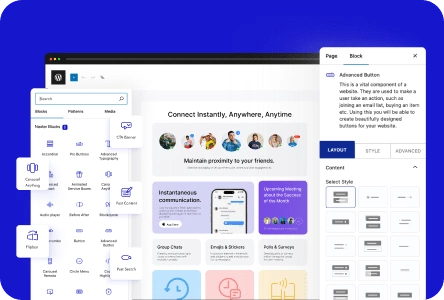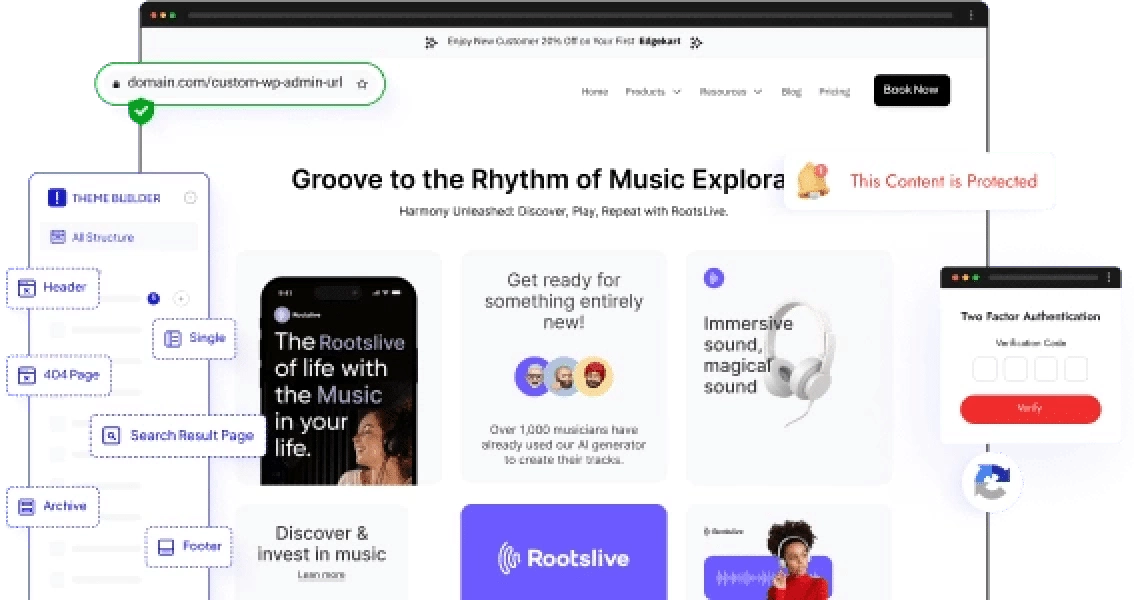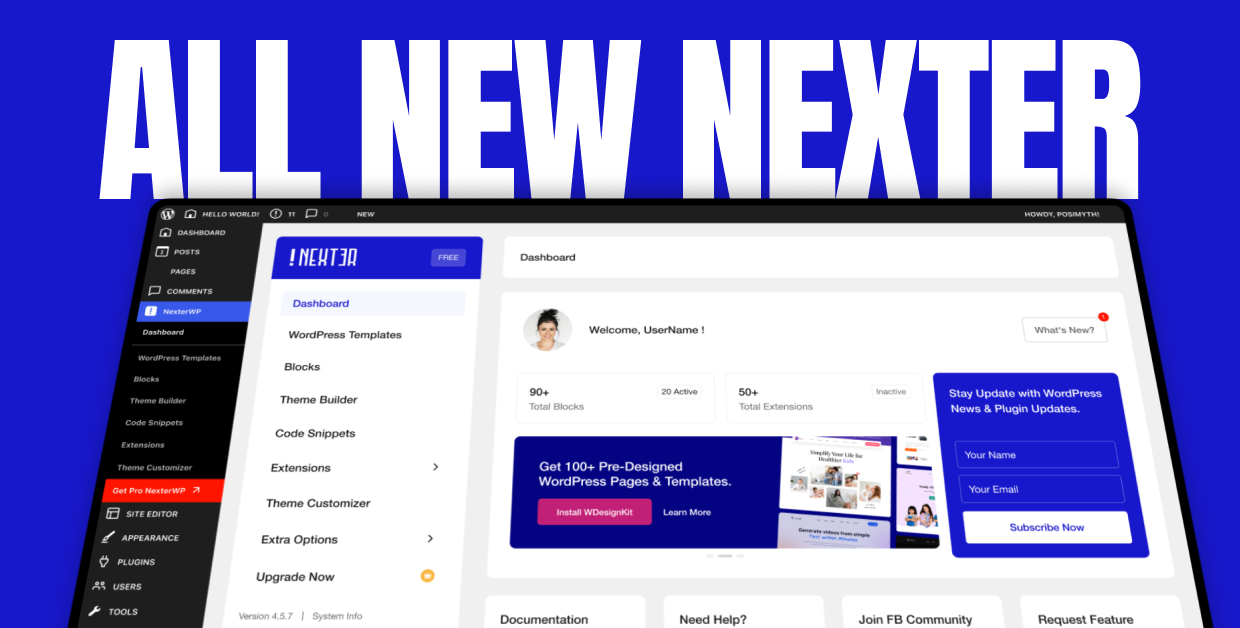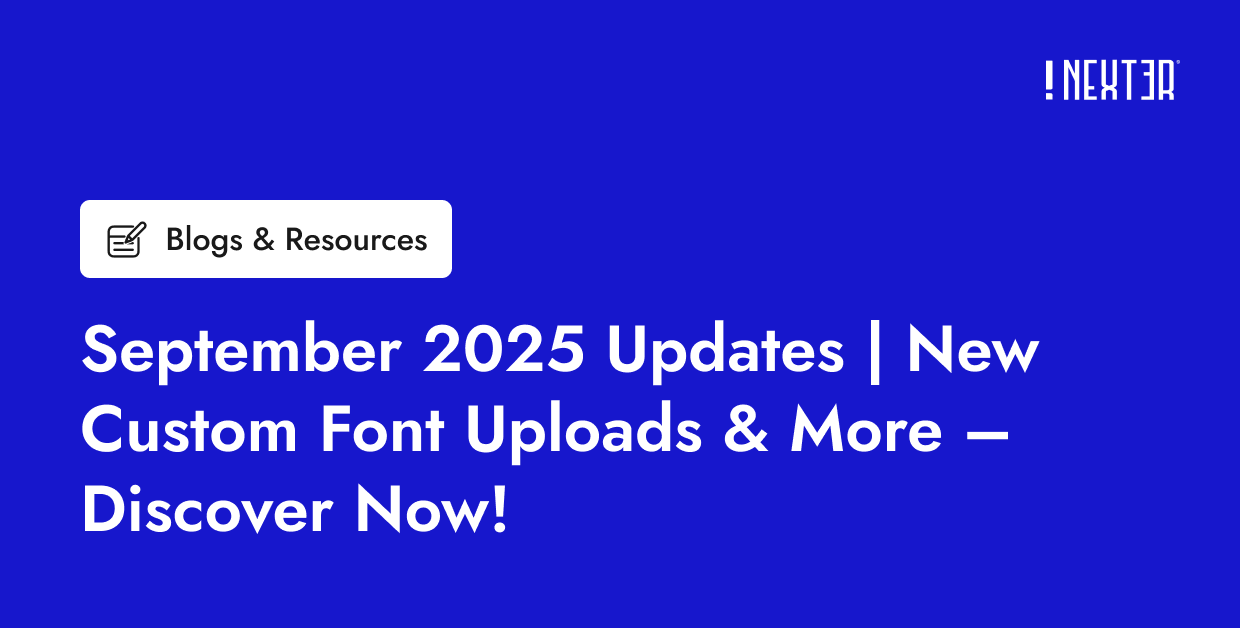Creating a custom header template in WordPress allows users to add unique and creative elements to their website, such as navigation menus, logos, search bars, and more. Creating a custom header template in WordPress can be a challenging task, but with Nexter Theme Builder, you can easily create a unique and customized header template for your website.
Requirement – This is a feature of Nexter Extension (Free) plugin, make sure its installed & activated to enjoy all its powers.
To create a header template using the Nexter Theme Builder, follow the steps –
1. From the Dashboard, go to Nexter Extension > Theme Builder > Add New Template.
2. In the popup, select Header from the Select Template dropdown.
3. Then, in the Name of Template field, add the template name.
After that, you can click on the Additional Settings link.
From the Type dropdown, you can select the header type. Here you’ll find three options –
- Normal – This is to create a normal header.
- Sticky – This will make the header sticky at the top. It will appear only when users start scrolling down and remain fixed at the top.
- Normal + Sticky – If you want the sticky header to be visible from the start, then select this option. This will make the header stick at the top from the beginning.
Select the header type that fits your needs.
If you turn on the Transparent Header toggle, it will make the header slightly overlap the first section of the page.
4. Once done, click on the Next button.
5. On the next screen, you have to set the appropriate display conditions.
From the Include In dropdown, you have to select where the template will be visible. Here you’ll find some locations –
- Entire Website – This will apply the display rules on the entire website.
- All Singulars – This will apply the display rules on all the single pages of the website. Like single page, single post etc.
- All Archives – This will apply the display rules on all the archive pages of the website. Like date archive, search archive etc.
- Front Page – This will apply the display rules on the home page of the website.
- Blog / Posts Page – This will apply the display rules on the blog page.
- Date Archive – This will apply the display rules on the date archive template.
- Author Archive – This will apply the display rules on the author archive template.
- Search Page – This will apply the display rules on the search archive template.
- 404 Page – This will apply the display rules on the 404 page template.
- Day of Week – With this, you can set the display rule for specific days of the week. You have to use this option with other display options to set the location of the template.
- Operating System – With this, you can set the display rule based on the user operating system. You have to use this option with other display options to set the location of the template.
- Browser – With this, you can set the display rule for different browsers. You have to use this option with other display options to set the location of the template.
- Login Status – With this, you can set the display rule based on the user’s login status. You have to use this option with other display options to set the location of the template.
- User Roles – With this, you can set the display rule based on the user’s role. You have to use this option with other display options to set the location of the template.
- All Posts – This will apply the display rules on all the blog posts.
- All Posts Archive – This will apply the display rules on all posts archive, like all taxonomy pages, author pages etc..
- All Categories Archive – This will apply the display rules on all categories archive pages.
- All Tags Archive – This will apply the display rules on all tags archive pages.
- All Pages – This will apply the display rules on all the pages.
- Particular Posts / Pages / Taxonomies, etc.- With this option, you can set display rules for specific posts, pages, taxonomies etc.
Note: You’ll get additional display options (plugin specific) for Elementor, WooCommerce and custom post types.
You can set the template location as per your requirements, let’s select Entire Website here.
Then from the Exclude From dropdown, you can set where the template won’t show. Here you’ll find the same locations as in the Include In dropdown.
Note: In both sections, you can add multiple locations.
6. Once done, then click on the Create button.
7. Then it will open the WordPress editor, where you can use the WordPress blocks or Elementor to create the actual layout and content of the template.
To enhance your design process, you can use Nexter Blocks for the WordPress block editor or The Plus Addons for Elementor widgets for Elementor.
8. Once done, publish the template.
Now your header template will be created and will show as per the set display conditions.
Also, check How to Create Footer Template in WordPress for Free.












